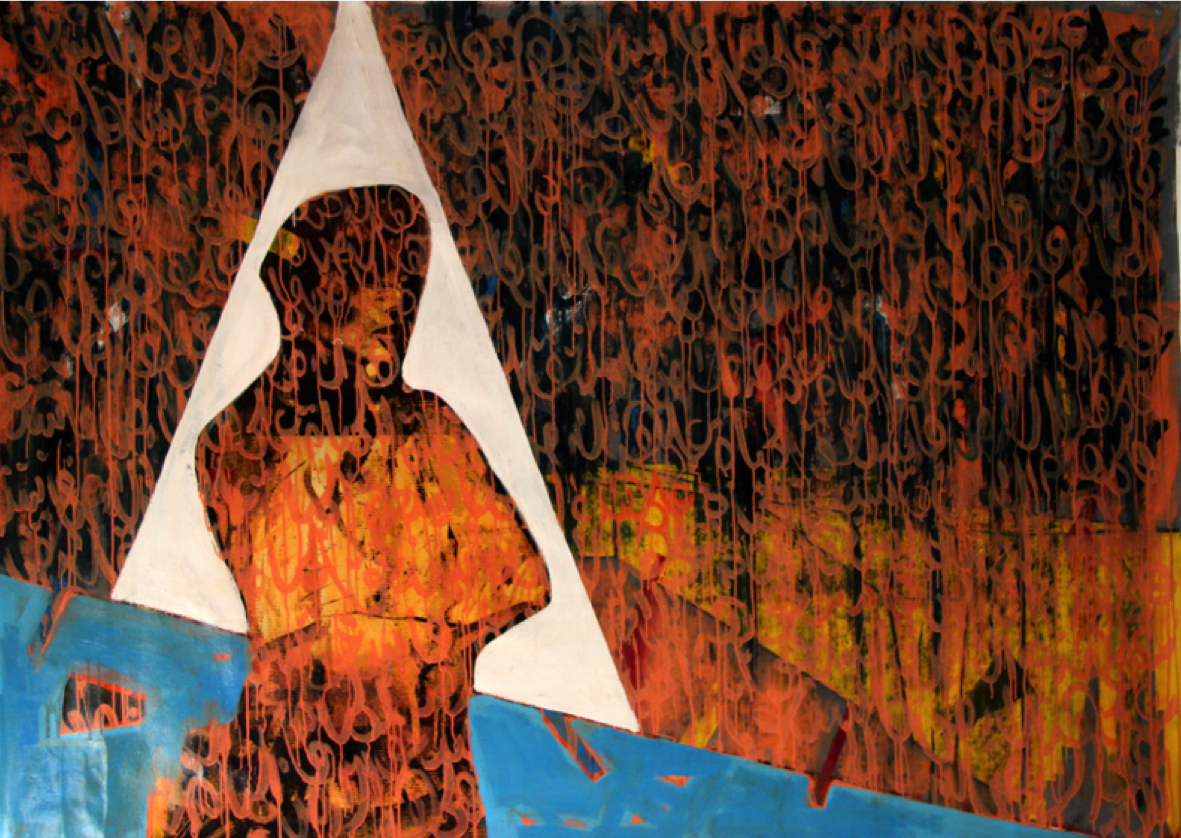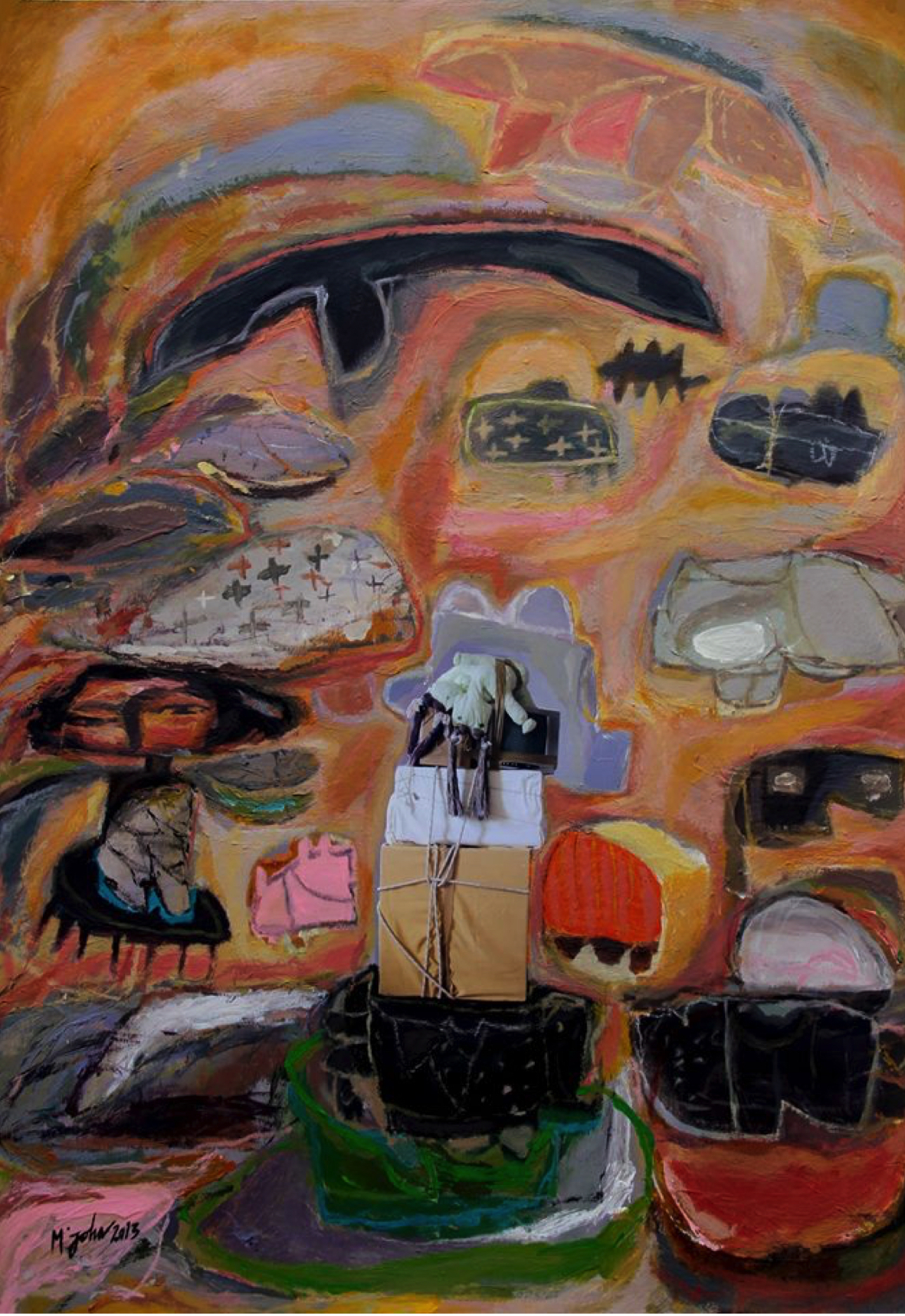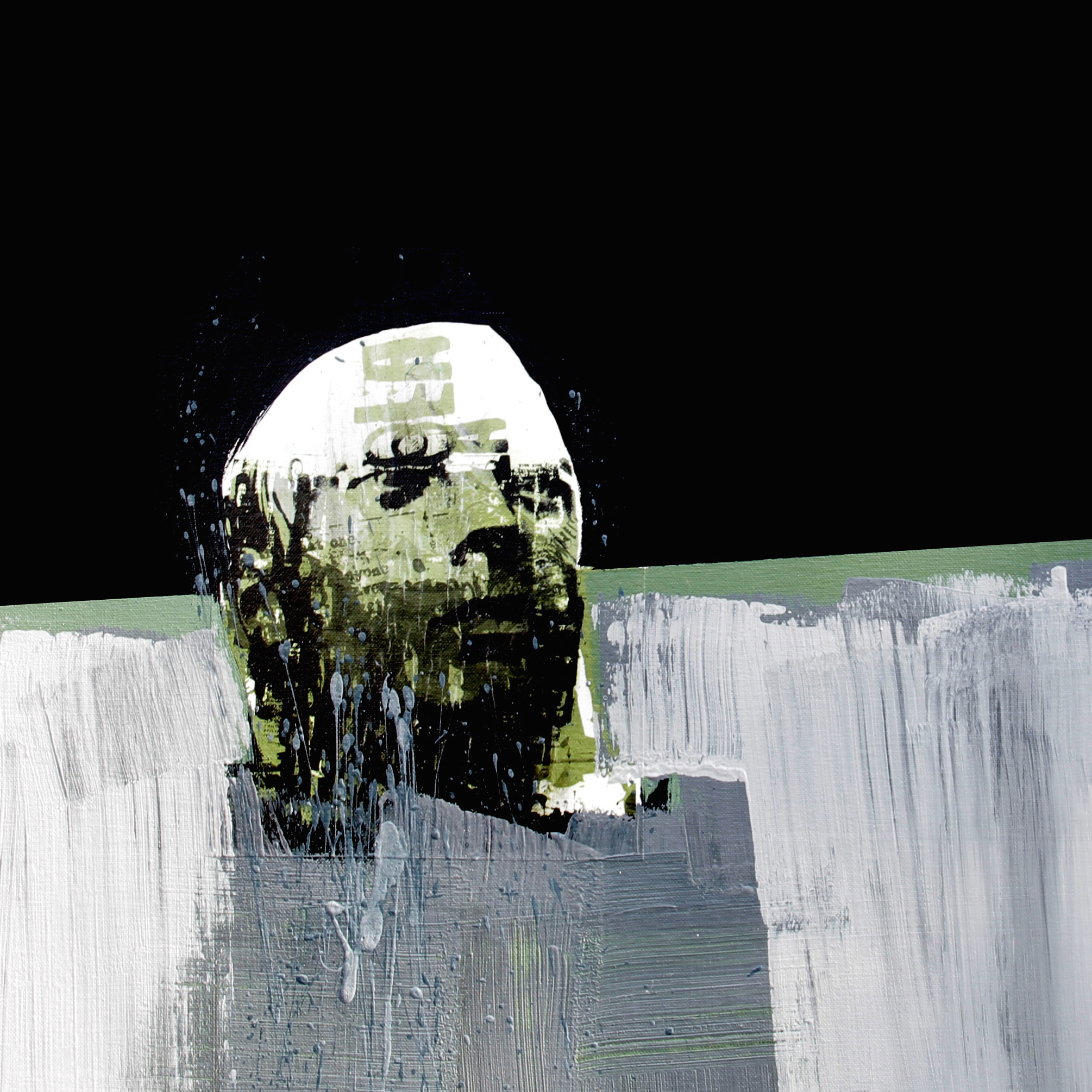Two artists from Gaza who found and rediscovered each other through their art
An exhibition uniting the works of two artists who grew up together in a turbulent Gaza, Traces and Revelations uncovers the stories of Hazem Harb and Mohammed Joha from their modest beginnings to the present day. The choice curation of the exhibition by Aser El Saqqa of Arts Canteen and Durham University’s Craig Barclay highlights both a sense of togetherness as well as disparity, the works telling a tale of two men who nurtured their mutual artistic talents from a minimalistic concrete studio constructed from the remnants of Joha’s old family home, and were later reunited in Italy.
Now in their thirties, the artists spoke to me about their childhood experiences of producing art in such an environment. They viewed their tiny studio as a refuge, almost, from the realities of a country at war, and an escape from the misery of a life surrounded by daily bloodshed and bombings; it was very much a ‘battle of ideas’, as Harb explained. Having broken free from the confines of their studio, Harb and Joha now work between Italy and the UAE, their talents serving as the driving force in their respective journeys from their Palestinian beginnings.
Upon entering Harb’s Dubai home, I was surrounded by artwork, struck by the use of imagery and vibrant colours at every glance. Continuing onwards into his studio – cosy, considering the sheer size of some of the pieces – I couldn’t help but feel it was a far cry from the one he used many years ago in his native Gaza. In the background, the scent of cardamom from a fresh pot of traditional Arabic coffee wafted about as we began to discuss the collection.
The artworks chosen by the curators for this particular exhibition are older pieces from Harb’s collection. A work from the artist’s Invisibility series presents viewers with a masked woman, without a face, entirely expressionless. This unidentifiable visage embodies the concept of anonymity, serving as an expression of how we as human beings hide ourselves. I see the mask as a protection mechanism, as it shields one from what surrounds them; but, it also confers a sense of anonymity in the sense that the bearer loses their sense of individualism to instead become ‘another’, which could in fact be anyone. Here, Harb describes the notion of ‘the other and I’ as a culture in itself; he is far from his experiences in Gaza, and finds himself as an ‘other’ looking back at the ‘I’ of his past, gazing at his own country like an outsider. The piece speaks about an identity that has been mislaid somewhere along the way, as well as the notion of being taken from one’s surroundings by force, when one simply becomes an unidentifiable entity.

Hazem Harb - There is Much on this Earth Worth Living For
The Invisibility series saw Harb adopt a mixed palette of various media on wood and canvas, with newspapers also incorporated here and there – a reference to media interference and the power of words, regardless of whether they have a positive or negative impact. As Harb explained to me, he has no preferred medium; rather, his ‘weapon’ of choice depends very much on the concept he is exploring. Going though his sketchbook with him, I saw his imagination spring to life and materialise into his artworks and installations as we leafed through the pages; it was as if I was taking a personal journey with Harb, going back to perhaps the most basic of artistic concepts - the sketch – that reveals much of the workings of an artist’s mind. For me, personally, this idea epitomises the concept of the exhibition, whose title is laden with references, from the artists’ own practices to the revelation of the innermost expressions of the Palestinian people through visual representation. However, among all these representations, it is the hand-drawn sketch that I find reveals the most about the artists.
In the UK, Palestinian art is part of an international art scene … our issue is a global [one]’ … this is about, to quote Joha, ‘showing the rest of the world that the Palestinian people deserve life … they choose life’
In speaking with Joha, we discussed his insights and ambitions for the exhibition, how his own story intertwined both with his upbringing in Gaza and his shared childhood with Harb, and how the two grew together and apart over time, rediscovering one another in Italy, where they continued working as artists while reflecting on their past lives in Palestine. The sense of ever-present nostalgia is very much a part of Joha’s work in particular. In his In X Out series, he focused on the dialogue between house and home, and the role of memory therein; even if forced to leave one’s house, memories will stay behind. The juxtaposition of house and home are important to highlight here, as the house is a material construct, whereas the home is a personal one. This paradox is tangibly felt in looking at Joha’s pieces, which utilise a combination of acrylic and collage, and incorporate picture representations and actual objects in a depiction of reality versus fantasy. As one distances his or herself from the reality of the atrocities occurring around them, regarding their surroundings from a media viewpoint, they create an almost imaginary life and culture very much apart from any actualities.

#4 (from Mohammed Joha’s In X Out series)
Another piece in Joha’s series sees him adopting a layering technique, wherein a child’s toy takes the limelight. Almost a character itself, it stands apart from the rest of the canvas. ‘This toy is part of the life of the house’, he told me; the focus is not only on the residents of the house, but also the objects connecting them to it. Joha here explores a dialogue that cannot be broken – no matter what the situation – as it is a personal one that has transformed into a memory. I also questioned Joha’s use of bright, vibrant colours, despite the often sombre tone of the works on display. ‘This is a dialogue between me, the colours, and the canvas’, he explained, further adding that his paintings were inspired by the colours of ‘joy and life’, and the hope of one day returning to Palestine.
At its core, Traces and Revelations represents a discourse uniting two Palestinian artists from their childhood in Gaza to their present-day practices and artistic exchanges. ‘This is a point of meeting between Hazem and I’, said Joha. And the underlying message of the exhibition? ‘In the UK, Palestinian art is part of an international art scene … our issue is a global [one]’. This exhibition, according to Joha and Harb, is about showing Palestinians as individuals and artists in their own right, rather than a mass media representation (be it either negative or positive) of, or artistic interpretation of the Palestinian question; this is about, to quote Joha, ‘showing the rest of the world that the Palestinian people deserve life … they choose life’.
‘Traces and Revelations’ runs through October 5, 2014 at Durham University.

